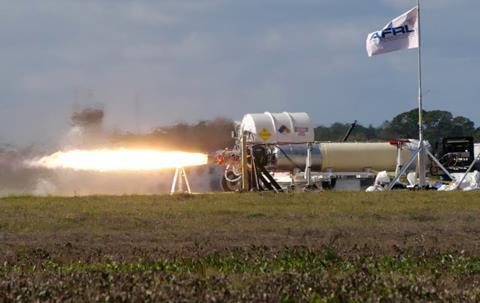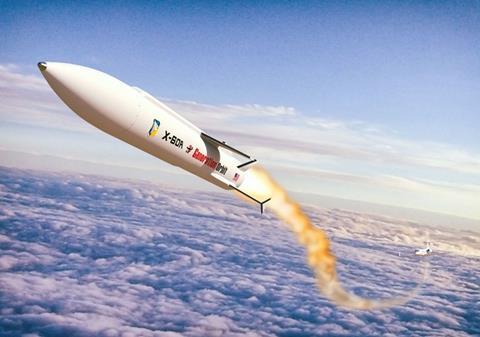The US Air Force Research Laboratory’s (AFRL) X-60A rocket recently completed test firings of its engine while on the ground at Cecil Spaceport in Jacksonville, Florida.
The X-60A is an air-launched, single-stage rocket designed to reach hypersonic speeds so that the AFRL can routinely test hypersonic technologies, such as air-breathing propulsion, advanced materials, and hypersonic vehicle subsystems. The system is designed to reach speeds above Mach 5.

It is being built by a startup called Generation Orbit Launch Services under a Small Business Innovation Research contract with AFRL. The vehicle uses a Hadley liquid rocket engine, made by startup Ursa Major Technologies, which uses liquid oxygen and kerosene propellants.
The latest test included cold flow and hot fire testing of the Hadley rocket engine, says AFRL on 15 January. The laboratory says it conducted full duration burns, engine gimbaling for thrust vector control and system throttling tests.
“This test series was a critical step in reducing risk and gathering necessary system integration data in preparation for our upcoming flight tests,” says Barry Hellman, AFRL X-60A programme manager. “When we go to flight later this year, we hope to demonstrate the capability of the X-60A to provide affordable access to hypersonic flight conditions, which will position AFRL to deliver an innovative test capability for the Air Force and other [US Department of Defense] organizations.”

The rocket-powered vehicle is designed to be launched after being carried aloft and dropped from the undercarriage of a NASA C-20A, a military version of the Gulfstream III business jet.
The initial flight test of the X-60A is planned to take place at Cecil Spaceport later this year, says AFRL.





























